- Home
- Glossary Term
- Contract Lifecycle Management
Introduction
Contract Lifecycle Management (CLM) refers to the systematic process of managing an organization’s contracts from inception through execution, performance monitoring, and renewal or termination. By digitizing and automating each stage, CLM helps minimize risk, ensure compliance, accelerate deal cycles, and maximize contract value.
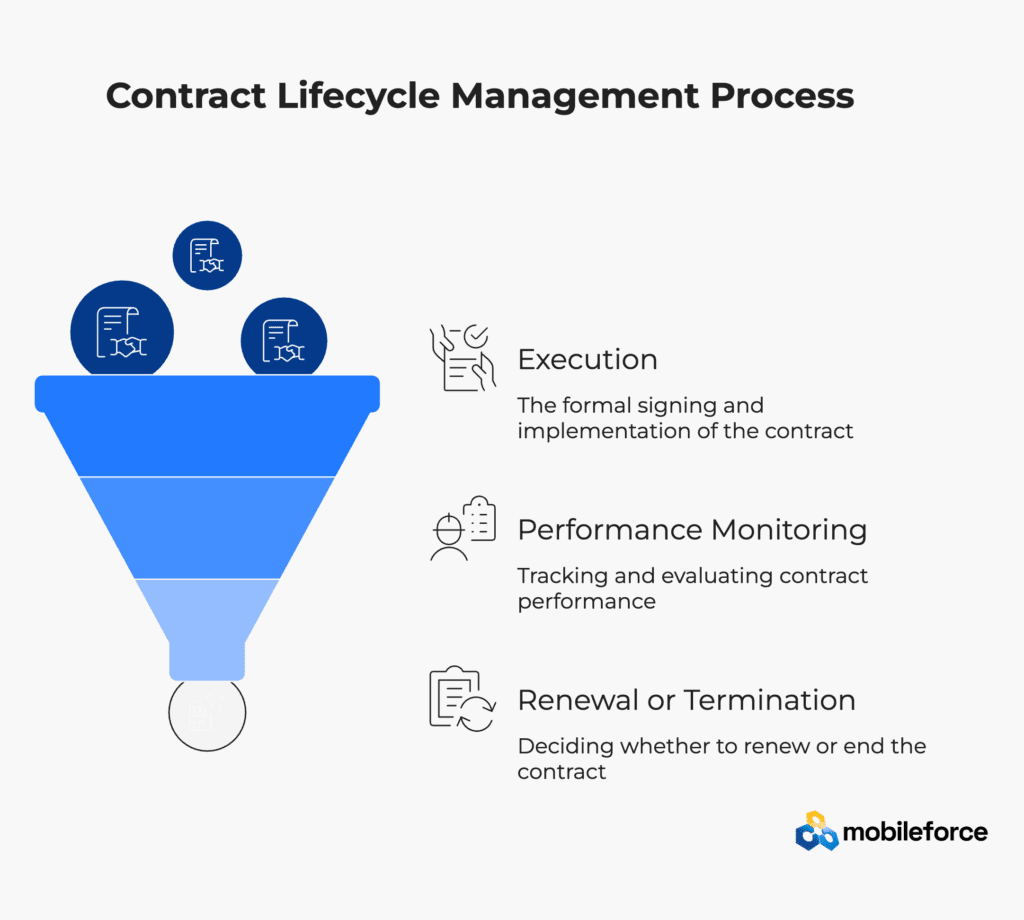
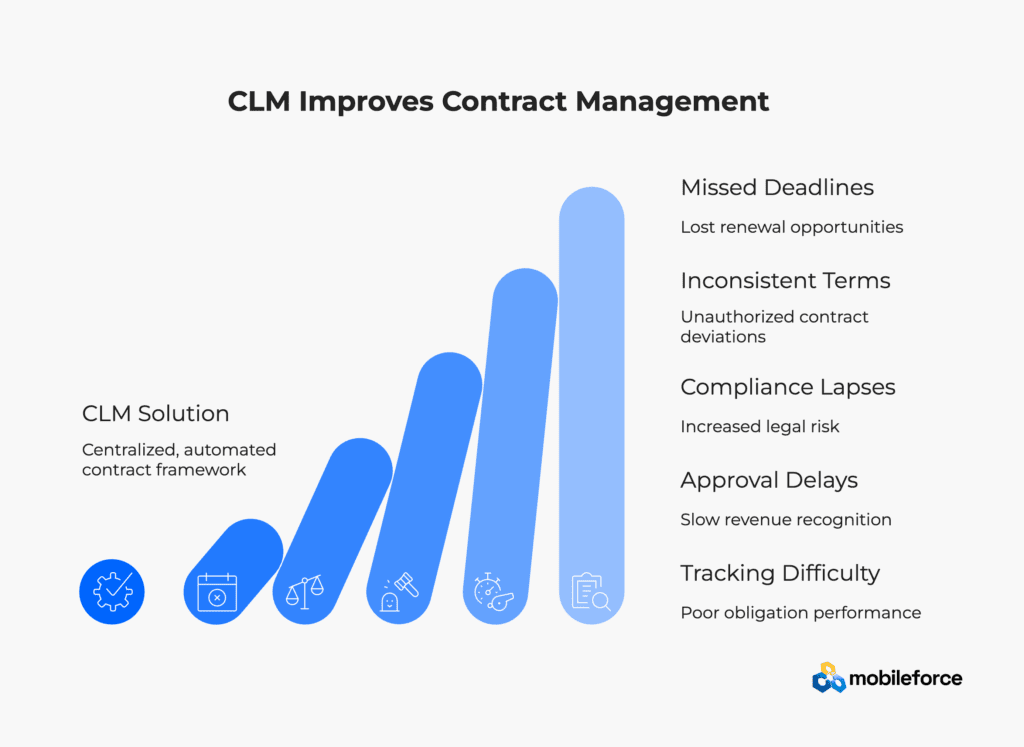
Why CLM Matters
Contracts underpin nearly every business relationship—governing sales, procurement, partnerships, employment, and more. Yet manual, fragmented contract processes lead to:
- Missed deadlines and renewal opportunities
- Inconsistent terms and unauthorized deviations
- Compliance lapses and increased legal risk
- Delays in deal approval and revenue recognition
- Difficulty tracking obligations and performance
CLM solutions address these challenges by providing a centralized, automated framework that:
- Standardizes contract creation and approval
- Centralizes storage and enhances searchability
- Automates workflows and reminders
- Tracks obligations, milestones, and compliance
- Delivers reporting and analytics for strategic insights
The Six Stages of CLM
Contract Request and Initiation
The lifecycle begins when a business need is identified—whether a new supplier agreement, customer proposal, or employment contract. A standardized request process ensures completeness by capturing all required details (parties, scope, deliverables, timelines, and risk considerations). Automated intake forms route requests to the appropriate teams without email bottlenecks.
Authoring and Drafting
Using preapproved templates and clause libraries, CLM platforms streamline draft creation. Version control tracks every edit, preventing outdated language or unauthorized changes. AI-enabled authoring tools can suggest clause options based on contract type, reducing drafting time by up to 50%.
Negotiation and Collaboration
Internal and external stakeholders collaborate securely within the CLM platform. Redlining, commenting, and inline edits ensure transparency throughout negotiations. Automated permission controls manage access based on role and deal value, ensuring sensitive terms remain protected.
Review, Approval, and Execution
Defined workflows route contracts through legal, finance, procurement, and other approval steps. Conditional logic accelerates routine approvals while routing exceptions to executives. Integrated e-signature capabilities enable fully digital execution, cutting signature turnaround from days to hours.
Performance and Obligation Management
Once executed, contracts enter the post-sign phase, where performance must be monitored. CLM platforms track key milestones—deliverable due dates, payment schedules, compliance audits—and send automated alerts for upcoming obligations. Central dashboards provide real-time visibility into contract status across the organization.
Renewal, Amendment, and Termination
As contracts approach expiration, CLM systems flag renewal windows and recommend actions based on performance metrics. Amendments and extensions are managed within the same platform, preserving the contract history. For non-renewals or terminations, automated offboarding workflows ensure all exit obl
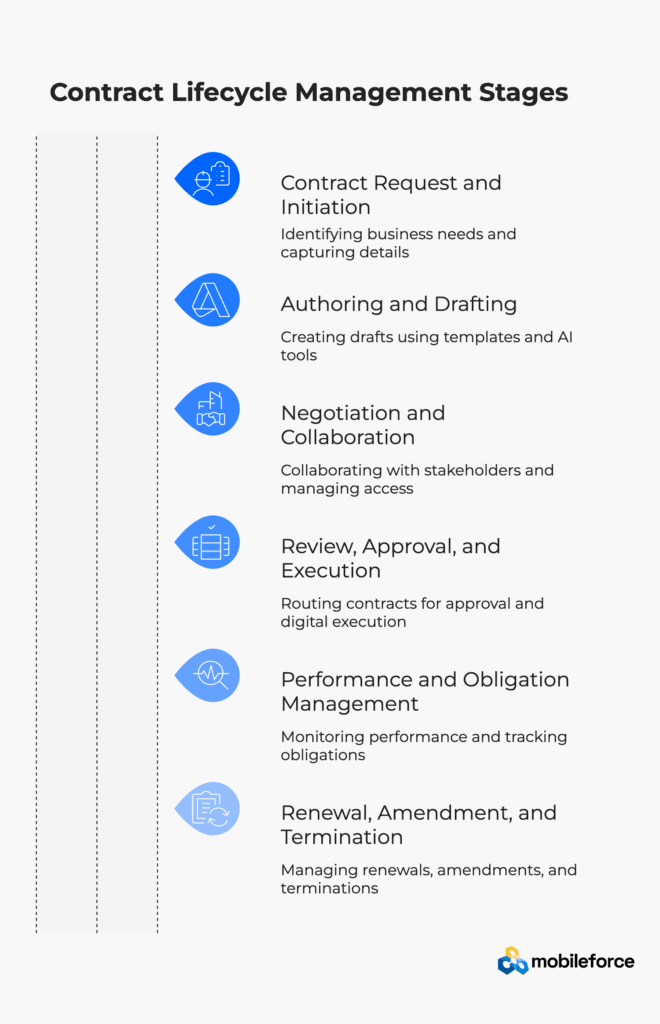
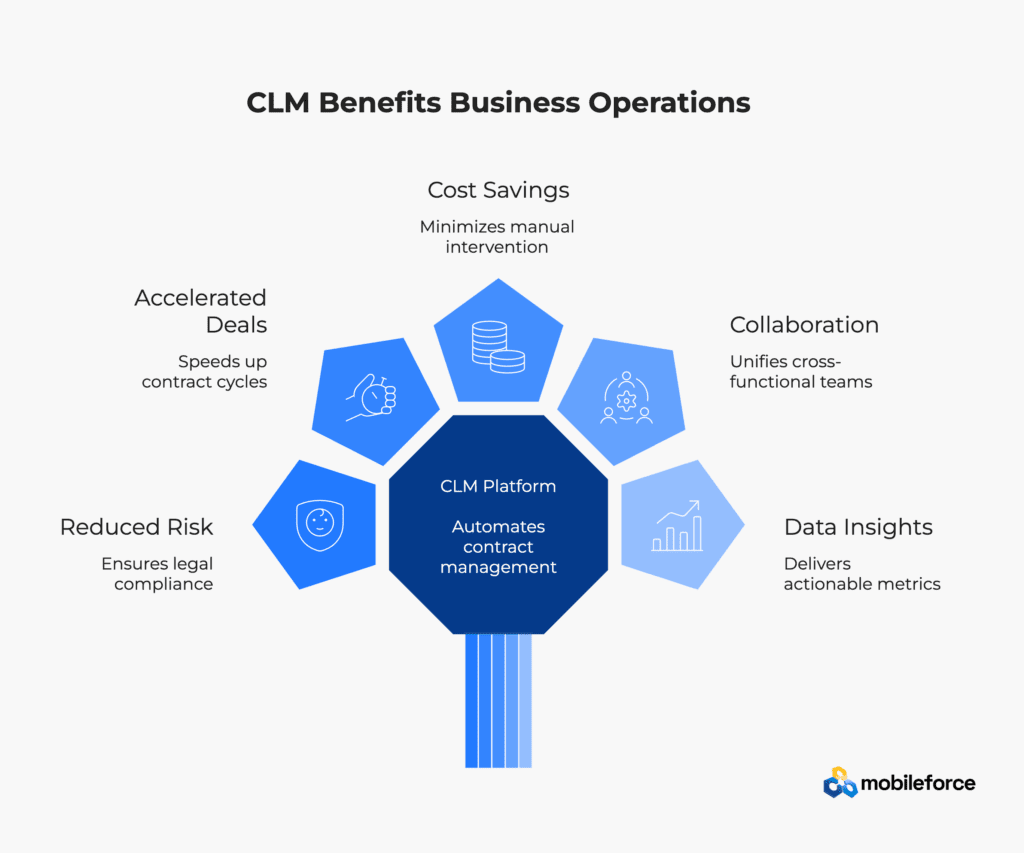
Key Benefits
Reduced Risk and Enhanced Compliance
Centralized repositories and audit trails ensure that every contract adheres to approved templates and legal standards. Automated compliance checks flag non-standard terms, reducing exposure to regulatory and financial penalties.
Accelerated Deal Cycles
By automating routine tasks—template selection, clause insertion, approval routing—CLM platforms can cut contract turnaround times by 30–50%, enabling sales and procurement teams to close deals faster.
Cost Savings and Efficiency
Organizations save on legal and administrative costs by minimizing manual interventions and rework. Role-based dashboards focus resources on high-value tasks, freeing teams from repetitive duties.
Improved Collaboration and Visibility
Cross-functional teams—from sales and marketing to legal and finance—collaborate in a unified platform. Real-time visibility into contract stages eliminates miscommunication and ensures all stakeholders have access to the latest versions.
Data-Driven Insights
Reporting and analytics deliver actionable metrics—cycle times, renewal rates, obligation compliance, and contract value realization. These insights guide strategic decisions, such as renegotiation timing and portfolio rationalization.
Implementing Best Practices
Define Clear Objectives: Identify specific pain points (e.g., missed renewals, lengthy approvals) and set measurable goals for CLM (e.g., reduce cycle time by 40%).
Assemble a Cross-Functional Team: Include representatives from legal, sales, procurement, IT, and finance to ensure all requirements are addressed.
Standardize Templates and Workflows: Develop approved templates, clause libraries, and rule-based workflows before rolling out the system.
Invest in Change Management: Train users, communicate benefits, and provide ongoing support to drive adoption.
Integrate with Core Systems: Ensure seamless data flow by linking CLM with CRM, ERP, and third-party signature platforms.
Monitor Metrics and Iterate: Regularly review performance dashboards and refine processes to continuously improve efficiency and compliance.
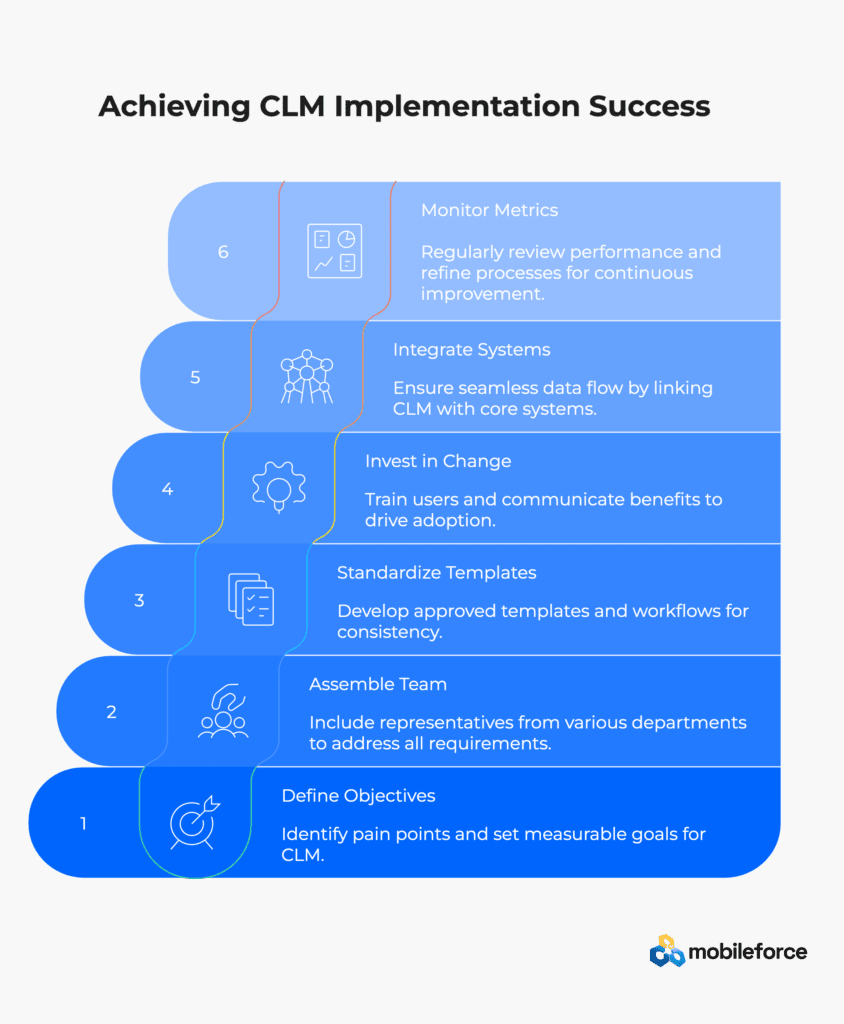
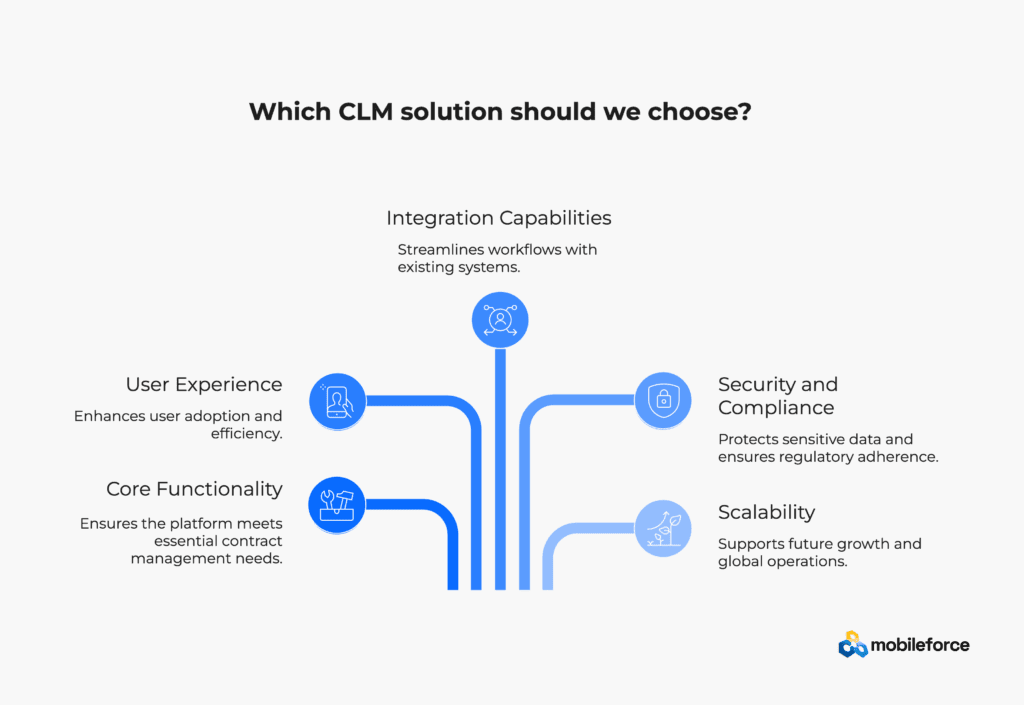
Choosing the Right CLM
When evaluating CLM platforms, consider:
- Core Functionality: Template libraries, clause management, AI-assisted drafting, e-signature, obligation tracking
User Experience: Intuitive interface, mobile access, collaboration tools
Integration Capabilities: APIs for CRM, ERP, document management, and signature services
Security and Compliance: Role-based access, encryption, audit logs, certifications (ISO, SOC)
Scalability: Support for global operations, multiple languages, currency, and compliance regimes
Future Trends
AI and Machine Learning: Enhanced contract risk scoring, automated extraction of key terms, predictive analytics for renewal and compliance risks.
Smart Contracts and Blockchain: Automated enforcement of contract terms through decentralized ledgers in highly regulated industries.
Experience-Driven Collaboration: Embedded collaboration features—chat, video reviews, interactive dashboards—to further reduce delays and enhance transparency.
End-to-End Digital Transformation: Holistic integration of CLM into broader digital workflows, enabling seamless handoffs between contracting and project execution or sales fulfillment.
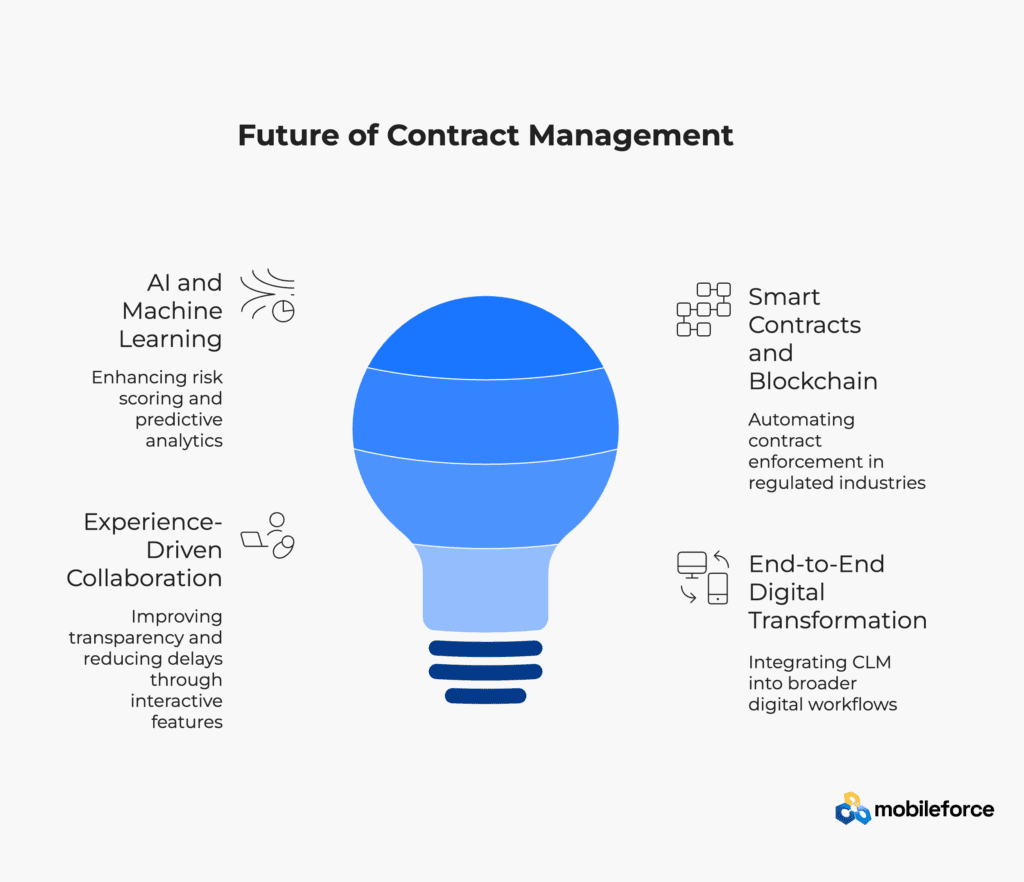
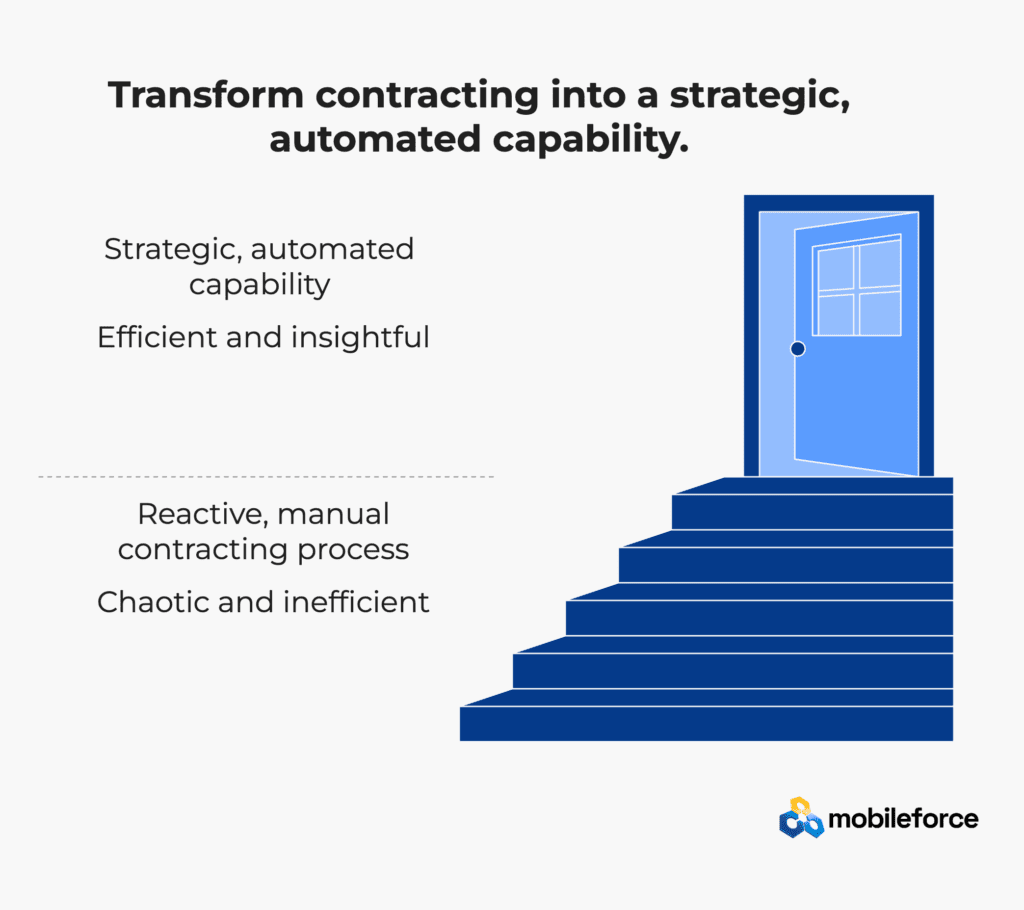
Conclusion
Contract Lifecycle Management transforms contracting from a reactive, manual process into a strategic, automated capability that drives efficiency, reduces risk, and delivers actionable insights. By standardizing templates, automating workflows, and centralizing data, organizations can accelerate deal cycles, improve compliance, and extract maximum value from every agreement. Implementing CLM requires clear objectives, cross-functional collaboration, and ongoing performance monitoring—but the rewards in risk mitigation, cost savings, and operational excellence make it an essential investment for modern enterprises.